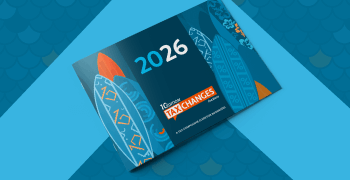Colorado confusion – Wacky Tax Wednesday
- All sales of drugs prescribed by a licensed provider as part of professional services provided to a patient/client are exempt from Colorado state sales tax under Colorado law (R.S. 39-26-717 (2015)).
- Veterinarians are licensed providers authorized to prescribe drugs in Colorado.
- Medications prescribed by veterinarians are subject to Colorado sales tax.
Wait, what?
The inconsistency of the above statements has caused a sales tax snafu for the veterinarians of Loveland, Colorado. Recent audits revealed that several veterinarians were not in compliance with the city’s local sales tax law because they hadn’t been collecting tax on sales of prescription medications sold to their patients (or rather, their patients’ responsible humans). In addition, the auditor reportedly told the veterinarians they could be liable for three years’ worth of unpaid taxes, plus penalties and interest.
The veterinarians were surprised; they had no idea prescribed medications were subject to sales tax.
“When in doubt, tax must be paid.”
According to a Colorado Department of Revenue information notice on medical and dental supplies and equipment, “Any time a question exists as to whether a sale is taxable or exempt; (sic) the law requires that the vendor charge the sales tax and the purchaser pay the tax.” If tax isn’t paid, the vendor must be able to prove that the sale is exempt.
But the veterinarians weren’t in doubt: the department’s policy on taxing prescription drugs clearly states that prescription drugs are exempt from state and state-administered sales and use taxes when “dispensed in accordance with a prescription or furnished by a licensed provider.” It is also states that “prescription drug includes … drugs prescribed by veterinarians.”
So why did Loveland auditors find the veterinarians to be out of compliance?
Home sweet home
The confusion could be caused by the fact that Loveland is a home rule municipality. Under home rule, it collects, enforces and administers local sales and use taxes and is permitted to adopt a “broader or narrower” sales tax base than the one established by the state. In home rule states, “exemptions may be specific to state, county, city or special district.”
The state doesn’t administer sales and use tax for Loveland, and so the state-allowed exemption for drugs prescribed and sold by veterinarians doesn’t necessarily apply in Loveland. If Loveland wants to tax veterinarian-prescribed medications, it can — and it doesn’t even have to tell the Colorado Department of Revenue.
Problem solved.
But wait!
According to the Loveland general sales tax provisions:
“The tangible personal property and services taxable under this chapter shall be the same as the tangible personal property and services taxable pursuant to § 39- 26-104, Colorado Revised Statutes, and subject to the same exemptions as those specified in § 39 -26 -114, Colorado Revised Statutes
[now Part 7].”
Prescription medications (veterinarian-prescribed or otherwise) are not specifically referenced in either of these statutes. However, the Colorado Department of Revenue information notice states that they’re exempt according to C.R.S. 39-26-717.
If all this sounds complicated, it’s because it is. It’s incredibly complicated. The state allows an exemption for medication prescribed and sold by veterinarians, but Loveland doesn’t because it taxes the tangible personal property and services that are taxed by the state. Clear as mud.
Loveland City Manager Bill Cahill says medications prescribed by veterinarians have been subject to tax for a long time. In a June 17 letter to veterinarians, city officials explained:
“When Loveland became a Home Rule city in the late 1990s, its sales tax base conformed to the tax base established by the State of Colorado. At the time, Colorado — and Loveland — collected sales tax on prescription veterinary drugs for ‘pet animals.’ Prescription drugs for livestock were, and remain, exempt from sales tax.”
After establishing home rule, Loveland continued to follow that practice. However, the letter admitted that at some point in the early 2000s, “a city staff member told veterinarians that pet medications would be exempt from the tax.” It continued:
“This was the City’s error. It is likely that the basis for this message was tied to a State policy change, and a decision by another city in the region, to exempt these medications.”
Until the recent audits, city officials believed veterinarians were collecting and remitting the tax.
Fortunately for the noncompliant veterinarians, the City of Loveland recognizes that this is a confusing issue. Cahill has “acknowledged there should have been better communication when the tax first went into effect,” and the city council intends to look into the matter. For the time being, city officials do not intend to go after the back taxes; and later this year, the Loveland Finance Department will recommend veterinary prescriptions be exempt from local sales and use tax.
Find sales tax disturbingly confusing? Tax automation can help. Learn how it works.

Avalara Tax Changes 2026 is here
The 10th edition of our annual report engagingly breaks down key policies related to sales tax, tariffs, and VAT.
Stay up to date
Sign up for our free newsletter and stay up to date with the latest tax news.














